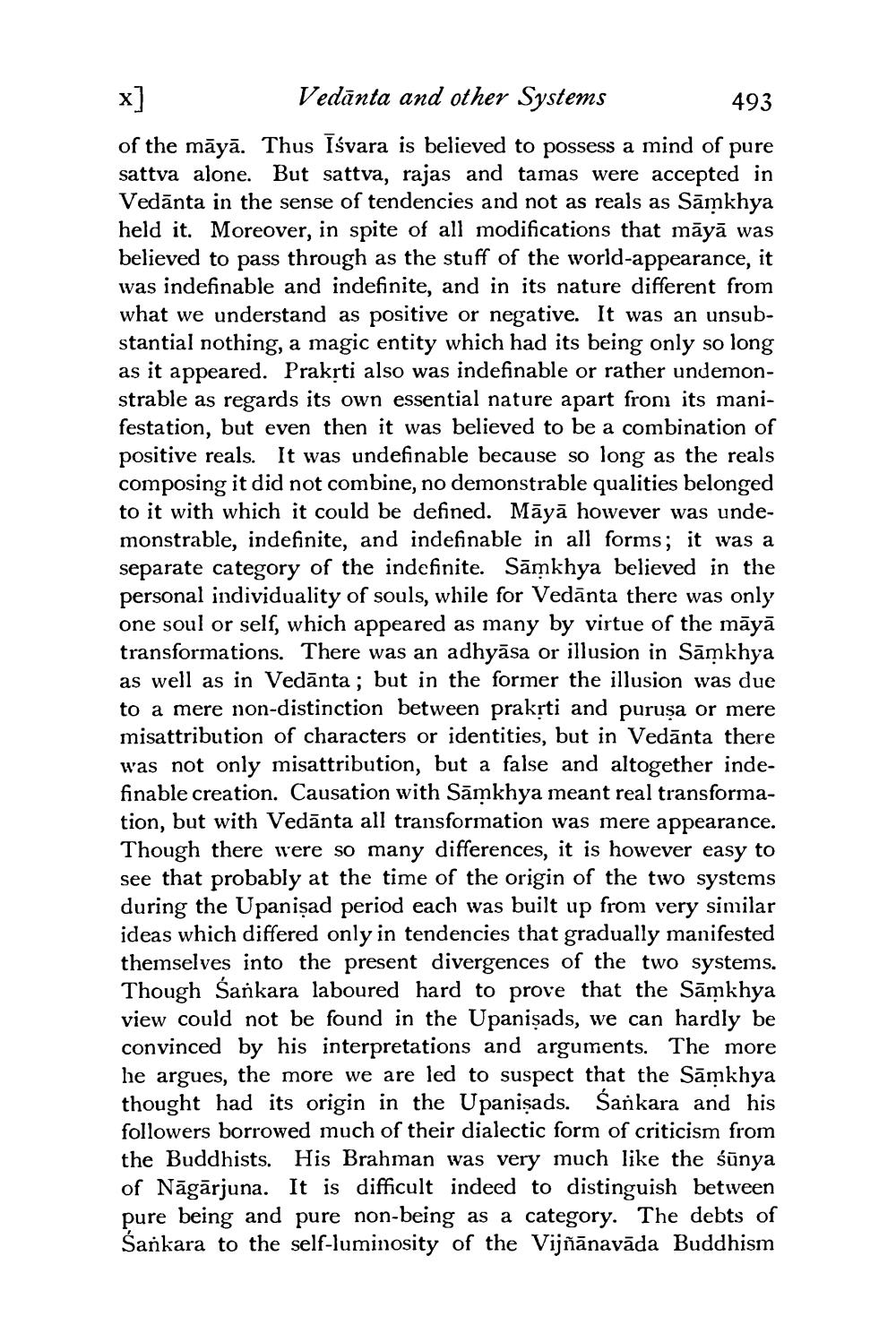________________
Vedānta and other Systems
493
of the māyā. Thus Isvara is believed to possess a mind of pure sattva alone. But sattva, rajas and tamas were accepted in Vedānta in the sense of tendencies and not as reals as Sāmkhya held it. Moreover, in spite of all modifications that māyā was believed to pass through as the stuff of the world-appearance, it was indefinable and indefinite, and in its nature different from what we understand as positive or negative. It was an unsubstantial nothing, a magic entity which had its being only so long as it appeared. Prakrti also was indefinable or rather undemonstrable as regards its own essential nature apart from its manifestation, but even then it was believed to be a combination of positive reals. It was undefinable because so long as the reals composing it did not combine, no demonstrable qualities belonged to it with which it could be defined. Māyā however was undemonstrable, indefinite, and indefinable in all forms; it was a separate category of the indefinite. Sāmkhya believed in the personal individuality of souls, while for Vedānta there was only one soul or self, which appeared as many by virtue of the māyā transformations. There was an adhyāsa or illusion in Sāmkhya as well as in Vedānta; but in the former the illusion was due to a mere non-distinction between prakrti and purusa or mere misattribution of characters or identities, but in Vedānta there was not only misattribution, but a false and altogether indefinable creation. Causation with Sāmkhya meant real transformation, but with Vedānta all transformation was mere appearance. Though there were so many differences, it is however easy to see that probably at the time of the origin of the two systems during the Upanisad period each was built up from very similar ideas which differed only in tendencies that gradually manifested themselves into the present divergences of the two systems. Though Sankara laboured hard to prove that the Sāmkhya view could not be found in the Upanişads, we can hardly be convinced by his interpretations and arguments. The more he argues, the more we are led to suspect that the Sāmkhya thought had its origin in the Upanişads. Sankara and his followers borrowed much of their dialectic form of criticism from the Buddhists. His Brahman was very much like the sūnya of Nāgārjuna. It is difficult indeed to distinguish between pure being and pure non-being as a category. The debts of Sankara to the self-luminosity of the Vijñānavāda Buddhism




